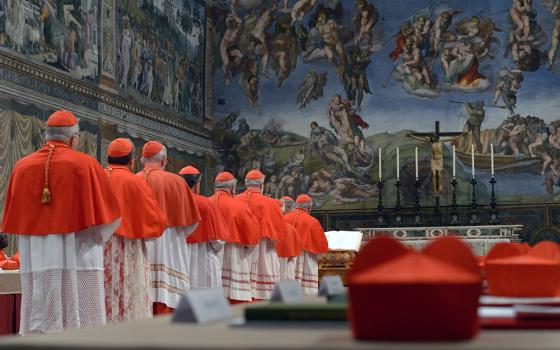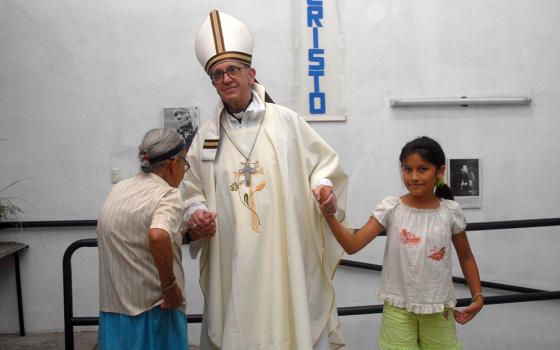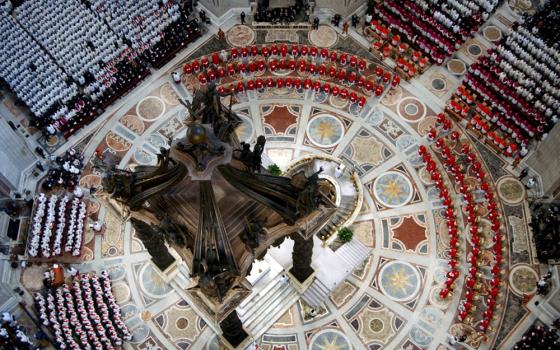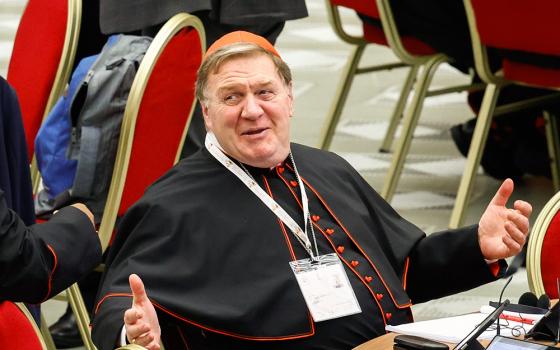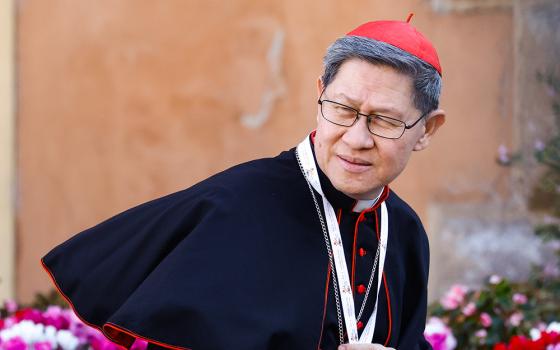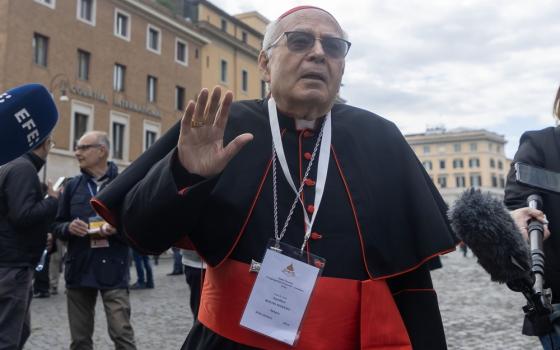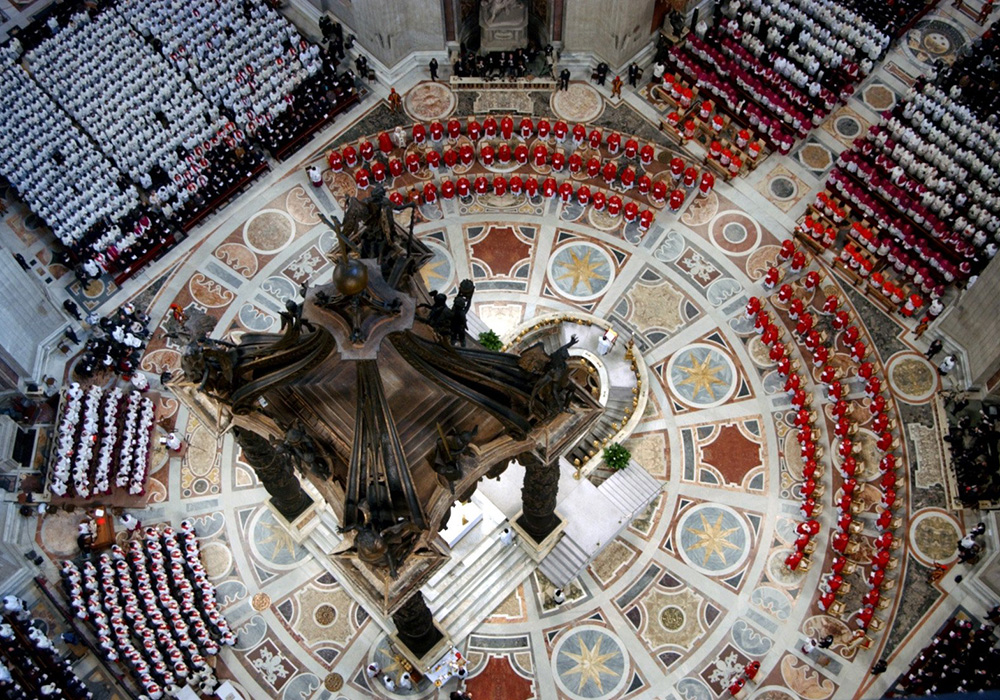
Cardinals attend the opening Mass of the conclave in St. Peter's Basilica at the Vatican on April 18, 2005. Cardinals under the age of 80 processed into the Sistine Chapel about five hours after the Mass to begin the secret process of electing a new pontiff. German Cardinal Joseph Ratzinger was elected the 265th pope and chose the name Benedict XVI. (CNS/Reuters)
The axiom "he who enters the conclave a pope, leaves a cardinal" is as wrong as it is ubiquitous. Commentators on TV who know nothing about the church repeat it ad nauseam. A quick review of the last century of conclaves illustrates why it is wrong — and much else!
In the conclaves of 1939, 1963 and 2005, the person who "entered the conclave a pope" did, in fact, emerge as pope. In 1939, as the storm clouds of war prepared to unleash their fury, the cardinals turned to the church's most seasoned diplomat, the Vatican secretary of state, Cardinal Eugenio Pacelli. It was the shortest conclave of the 20th century, with Pacelli winning the papacy on the third ballot. He took the name Pius XII.
In 1963, the first session of the Second Vatican Council had been tumultuous, with a huge majority of the world's bishops refusing most of the draft texts prepared by the Vatican Curia. When Pope John XXIII died, the question facing the cardinals was whether or not to rollback the direction the council was taking or to proceed. They elected the leading papabile, the archbishop of Milan, Cardinal Giovanni Battista Montini, on the fifth ballot, the second day of voting.
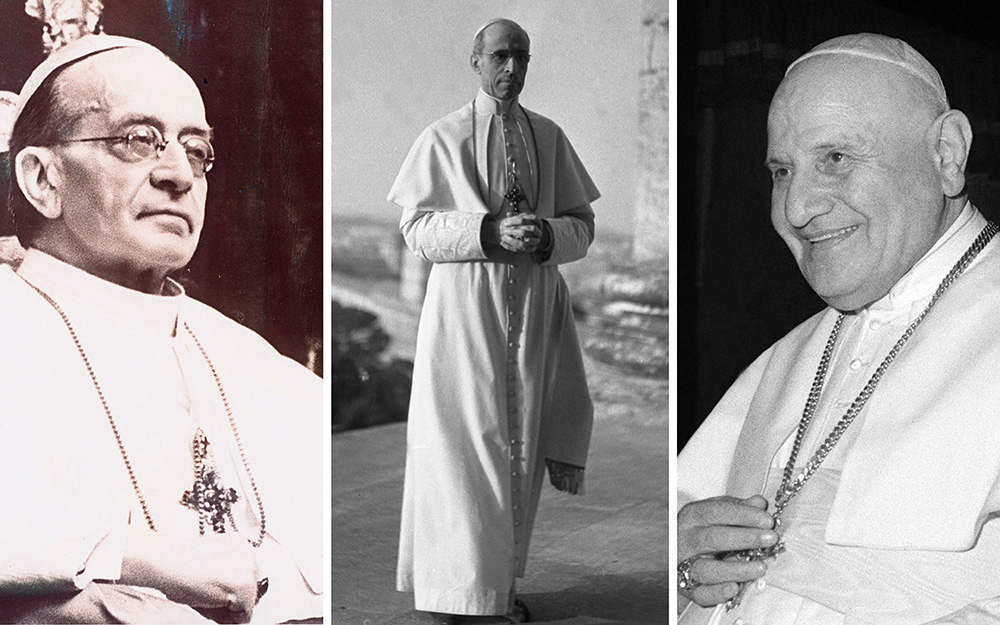
Pope Pius XI, left, Pope Pius XII and St. John XXIII are seen in this composite photo. (CNS composite/Photos by L'Osservatore Romano, Vatican Media and Vatican Media)
Cardinal Joseph Ratzinger was the clear front-runner going into the 2005 conclave. The 27-year tenure of Pope John Paul II loomed large in people's minds, and the cardinals selected a man who had worked closely with the Polish pope. Most of the world's bishops knew Ratzinger from their ad limina visits. When they visited other dicasteries, they were sometimes met with indifference or even nastiness, but Ratzinger always greeted them in a productive and friendly manner. He was elected on the fourth ballot.
Pope John Paul II had changed the rules governing conclave procedures, allowing an initial ballot on the first day of the conclave. Previously, voting began on the second day. Allowing for the change, all three conclaves saw the front-runner win in two days, with only Pacelli winning on the first day of voting. This year, it seems unlikely that any candidate will secure the votes needed as quickly as Pacelli, Montini or Ratzinger.
The first conclave of 1978, in August, was also a two-day affair. In advance of the conclave, Cardinal Giovanni Benelli, who had served as Paul VI's right-hand man for ten years before becoming archbishop of Florence in 1977. But, Benelli was the kingmaker, not the king, in the August gathering. His candidate, the patriarch of Venice, Albino Luciani, was elected on the fourth ballot. He took the name John Paul I but died about a month later.
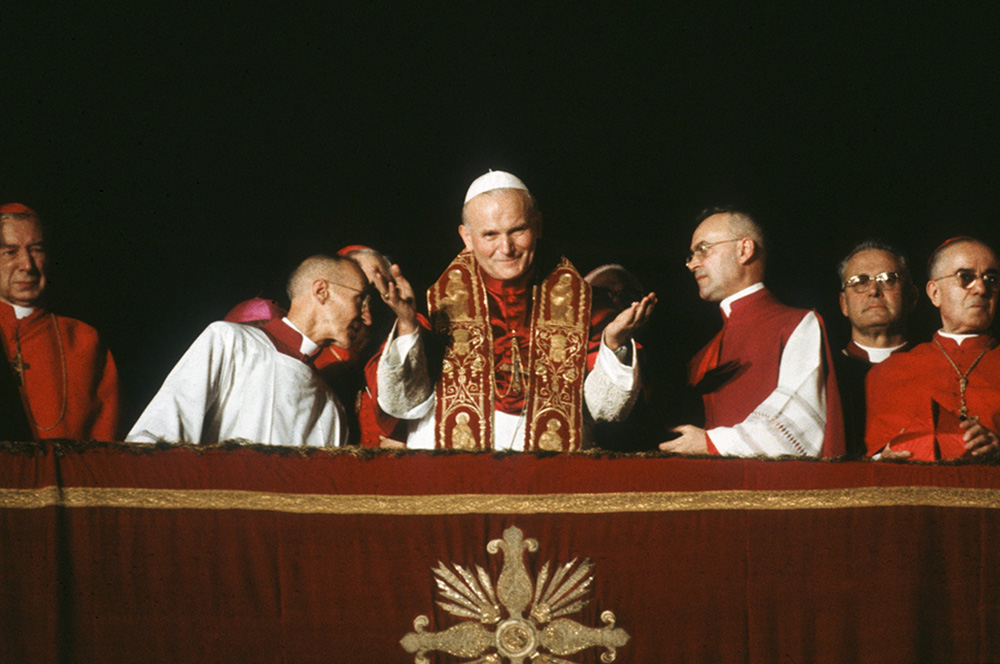
Pope John Paul II appears on the balcony at St. Peter's Basilica following his election to head the Catholic Church on Oct. 16, 1978. (OSV News/Catholic Press Photo/Giancarlo Giuliani)
In the conclave that followed, Benelli sought the top spot but it became clear at the end of the second day that neither he, nor his rival, the archconservative Cardinal Giuseppe Siri of Genoa, could garner the necessary votes of two-thirds plus one. Suddenly, the unthinkable, electing a non-Italian, became possible and necessary and Cardinal Karol Wojtyla's candidacy gained steam. He was elected on the eighth ballot, on the third day of voting. The lesson of that conclave for this year? If there is a deadlock, and black smoke, at the end of Day 2, we could have a pope who was on no one's list of possible candidates.
The 1958 conclave that elected the patriarch of Venice, Cardinal Angelo Roncalli, was the longest of the last century: Roncalli was elected on the 11th ballot. On the first day of voting, a variety of candidates were considered but the two most obvious front-runners, the conservative Siri and the more pastoral Cardinal Giacomo Lercaro of Bologna, proved unable to garner momentum. On the third day, Roncalli emerged, as did the Armenian patriarch, Cardinal Gregorio Agagianian, and Roncalli later recalled that their vote totals "went up and down like two chickpeas in boiling water." The lesson for 2025? Sometimes, if the conclave deadlocks on Day 2, a broadly acceptable, compromise candidate emerges on Day 3, one who, like Roncalli, is older and likely to serve for a relatively short time, as a kind of placeholder.
Which brings us to the 2013 conclave that elected Jorge Bergoglio, on the fifth ballot at the end of the second day of the conclave. Technically, it was the sixth ballot because on the fifth round of voting, a blank ballot was submitted and before the voting was counted the numbers didn't add up. The rules of the conclave mandated not counting those votes and moving immediately to a sixth ballot.
The front-runner going in had been the cardinal-archbishop of Milan, Angelo Scola. When white smoke appeared, the Italian Bishops' conference issued a statement mistakenly congratulating Scola on his election. We later learned that Scola underperformed expectations even on the first ballot, and Bergoglio overperformed. Scola's numbers declined and Bergoglio went on to win. This year, if Vatican Secretary of State Pietro Parolin underperforms on the first ballot, one of the other favorites could well become pope.
Advertisement
2025 most resembles a cross between the 1963 and 2013 conclaves. Like the situation of the church in 1963, when the conclave was a referendum on John XXIII's decision to convoke Vatican II, this conclave is a referendum on Francis' reforms. But, unlike that conclave, there is no equivalent of a Montini this time, someone who is the clear and obvious favorite to take the baton. In that regard, next week's conclave is more like 2013, with several candidates with varying strengths and weaknesses. Anyone of them could capture the cardinals' imagination during this week's general congregations as Bergoglio did in 2013, and emerge as pope by the close of Day 2.
If the conclave goes to a third day, all bets are off.



